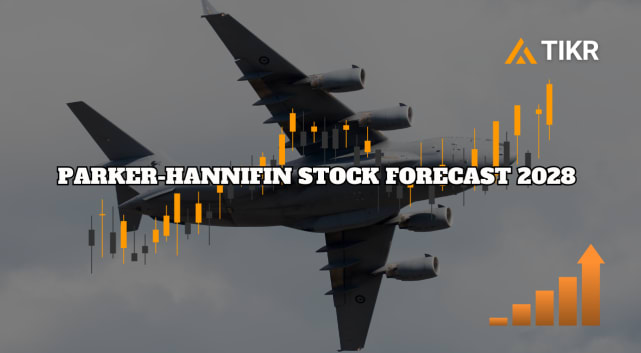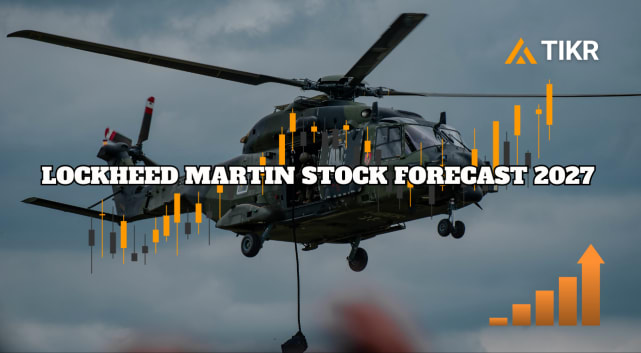Glencore (GLEN) kicked off 2025 in rebuild mode, focusing on operational discipline after a bumpy 2024 for copper and energy markets. The first half wasn’t spectacular, but it was steady. Group copper-equivalent production rose 5% as higher output of zinc, coal, and cobalt helped offset weaker copper grades. The integration of Elk Valley Resources (EVR) also gave the business a lift, expanding Glencore’s exposure to steelmaking coal just as prices began to stabilize.
Operationally, it was a mixed bag. Copper production dropped 26% due to mine sequencing and lower ore grades, while zinc and cobalt both gained double digits. Ferrochrome was the biggest drag, with several South African smelters still offline, but energy coal held firm, and marketing once again delivered reliable profits. Management expects a stronger second half, with copper grades improving and EVR contributing cash flow for a full six months.

Financially, Glencore is in solid shape. Liquidity sits above $10 billion, gearing remains low, and the company is targeting $1 billion in cost savings through 2026. Shares have been range-bound so far this year, but with higher-margin assets coming online and a more focused industrial footprint, Glencore looks better positioned heading into 2026 than it did a year ago.
Quickly value any stock with TIKR’s powerful new Valuation Model (It’s free!) >>>
Financial Story
| Item | H1’25 | H1’24 | YoY |
|---|---|---|---|
| Copper-equivalent production | 1,485 kt | 1,409 kt | +5% |
| Own-sourced copper | 344 kt | 463 kt | –26% |
| Own-sourced cobalt | 18.9 kt | 15.9 kt | +19% |
| Own-sourced zinc | 465 kt | 417 kt | +12% |
| Own-sourced nickel | 36.6 kt | 44.2 kt | –17% |
| Attributable ferrochrome | 433 kt | 599 kt | –28% |
| Steelmaking coal | 15.7 mt | 3.4 mt | +362% (EVR) |
| Energy coal | 48.3 mt | 47.2 mt | +2% |
| Copper unit cash cost | ~225 c/lb | ~171 c/lb | higher (H2 mix) |
| Realised prices (avg)** | Cu 410 c/lb, Zn 125 c/lb, Ni 697 c/lb | — | — |
| Marketing Adj. EBIT (framework) | $2.3–3.5bn p.a. | $2.2–3.2bn | raised |
| Estimated H1 Marketing Adj. EBIT | ~$1.35bn | — | — |
Glencore’s first half of 2025 was more of a reset than a rally, a period focused on stabilizing operations and preparing for a stronger second half. Copper-equivalent output climbed 5% year over year, powered by better zinc and coal volumes, plus the first full contribution from Elk Valley Resources. Copper was the weak spot, down 26% on lower grades and sequencing, but management expects that trend to flip in H2 as higher-grade ore comes online.
Zinc, cobalt, and coal all helped offset the softness, while ferrochrome remained under pressure as several South African smelters stayed offline. Costs were mixed: copper units rose early in the year due to lower throughput, but overall efficiency improved elsewhere. Marketing continued to play its steadying role, generating roughly $1.35 billion in Adjusted EBIT and keeping the group on track for its full-year range of $2.3–$3.5 billion.
With liquidity above $10 billion and net debt among the lowest in the sector, Glencore is using this transition period to simplify and strengthen its industrial portfolio. A $1 billion cost-cutting program is underway, and management has guided toward a leaner, more balanced business by 2026, one less reliant on copper volatility and better positioned to capture value from energy and trading.
See Glencore’s full financial results & estimates (It’s free) >>>
1. Marketing Strength Holds the Line
Glencore’s marketing segment once again did the heavy lifting, delivering around $1.35 billion in adjusted EBIT in the first half and keeping the company on pace for its full-year target of $2.3–$3.5 billion. Volatile energy and metals markets, especially in coal, nickel, and copper, created opportunities for trading gains, while strong physical demand for zinc and alumina added depth to margins. The division remains one of the most stable earnings engines in the mining sector, consistently offsetting cyclical swings in production volumes.
The importance of marketing can’t be overstated, it’s Glencore’s balancing act. When copper production dips or costs rise, this arm helps preserve free cash flow and investor confidence. It also provides a liquidity buffer, giving the company flexibility to manage dividends, debt, and buybacks without overrelying on commodity spot prices. Management reaffirmed that marketing’s annualized EBIT range should remain between $2.2 billion and $3.2 billion on a normalized basis, underlining its role as Glencore’s earnings anchor in uncertain markets.
2. Energy and Metals Portfolio Rebalanced
Glencore’s asset mix is quietly shifting toward a more balanced position after several years of outsized exposure to copper volatility. The acquisition of Elk Valley Resources has transformed the group’s energy portfolio, positioning steelmaking coal as a stronger earnings driver, especially as global demand from India and Southeast Asia grows. Meanwhile, zinc, nickel, and cobalt continue to play stabilizing roles, contributing to more predictable cash generation even as copper output lags.
Operationally, management is focusing on quality over quantity. Projects in Peru, Australia, and the DRC are undergoing optimization to lift grades and reduce cost intensity, while several smaller mines are being rationalized to streamline logistics and improve margins.
The goal is clear: build a leaner industrial base that complements Glencore’s trading expertise. That blend of high-grade production and high-margin marketing remains a differentiator against traditional miners like Anglo American or Rio Tinto, which rely more heavily on pure volume growth.
Value stocks like Glencore in less than 60 seconds with TIKR (It’s free) >>>
3. Capital Discipline and Outlook for 2026
The balance sheet story is one of quiet strength. Net debt sits near the bottom of Glencore’s target range, and with liquidity exceeding $10 billion, the company is comfortably positioned to fund expansion and shareholder returns. A $1 billion cost-savings initiative is underway to offset inflationary pressures and improve unit economics across copper and energy assets. Management also hinted at additional share buybacks if market conditions remain stable through early 2026, supported by free cash flow generation and limited near-term capital expenditure.
Looking ahead, the focus shifts to execution. Higher copper grades and expanded EVR volumes could drive a second-half earnings rebound, but much depends on commodity pricing and geopolitical stability in key markets.

Analysts remain split, some see Glencore as undervalued given its strong cash flow and trading optionality, while others are cautious about copper’s short-term recovery. Either way, the setup for 2026 looks more balanced than in prior years, with Glencore entering a phase defined less by volatility and more by controlled performance.
The TIKR Takeaway
At current levels, Glencore looks like a pragmatic hold for investors seeking diversified exposure to copper and steelmaking coal with a built-in hedge from its marketing business. The company has set the table for a better second half, copper grades, cost efficiency, and EVR contribution are all supportive, while maintaining tight capital discipline and strong liquidity.
Execution risk remains the key variable. Policy uncertainty in the DRC, weakness in the ferrochrome market, and uneven Chinese demand could all pressure near-term performance. But Glencore’s simplified structure, rising cash flow from bulks, and consistent marketing earnings provide a solid base heading into 2026.
Should You Buy, Sell, or Hold Glencore Stock in 2025?
The near-term risk/reward is balanced, upside depends on copper execution and supportive commodity prices, while downside stems from policy and operational risk. We’d look to add on weakness if H2 2025 delivery stays on track and cost targets hold.
Upgrade triggers: sustained copper grade recovery, strong EVR cash flow, and tangible delivery of the $1bn cost-savings program. Watch items: prolonged DRC cobalt export disruptions, slower ferrochrome restarts, and potential FX volatility (ZAR, AUD, EUR, CAD).
AI Compounders With Massive Upside That Wall Street Is Overlooking
Everyone wants to cash in on AI. But while the crowd chases the obvious names benefiting from AI like NVIDIA, AMD, or Taiwan Semiconductor, the real opportunity may lie in the AI application layer, where a handful of compounders are quietly embedding AI into products people already use every day.
TIKR just released a new free report on 5 undervalued compounders that analysts believe could deliver years of outperformance as AI adoption accelerates.
Inside the report, you’ll find:
- Businesses already turning AI into revenue and earnings growth
- Stocks trading below fair value despite strong analyst forecasts
- Unique picks most investors haven’t even considered
If you want to catch the next wave of AI winners, this report is a must-read.
Click here to sign up for TIKR and get your free copy of TIKR’s 5 AI Compounders report today.
Looking for New Opportunities?
- See what stocks billionaire investors are buying so you can follow the smart money.
- Analyze stocks in as little as 5 minutes with TIKR’s all-in-one, easy-to-use platform.
- The more rocks you overturn… the more opportunities you’ll uncover. Search 100K+ global stocks, global top investor holdings, and more with TIKR.
Disclaimer:
Please note that the articles on TIKR are not intended to serve as investment or financial advice from TIKR or our content team, nor are they recommendations to buy or sell any stocks. We create our content based on TIKR Terminal’s investment data and analysts’ estimates. Our analysis might not include recent company news or important updates. TIKR has no position in any stocks mentioned. Thank you for reading, and happy investing!







